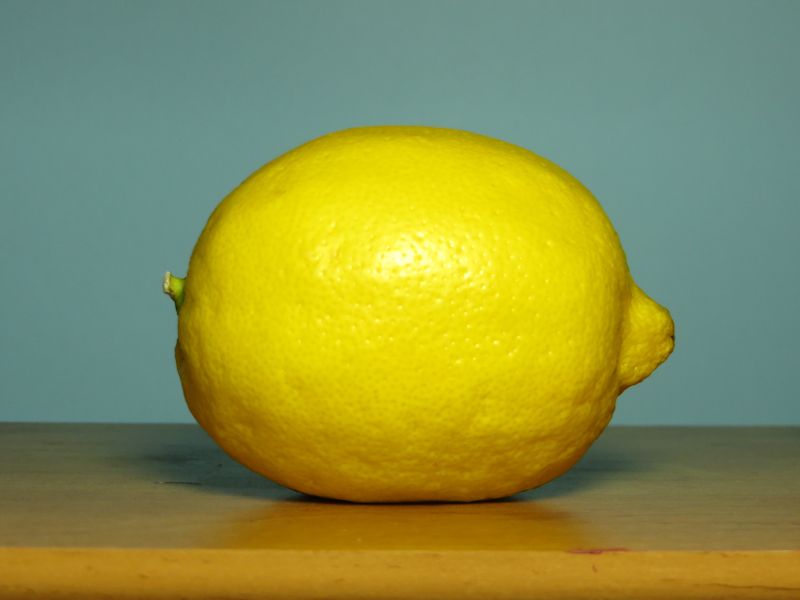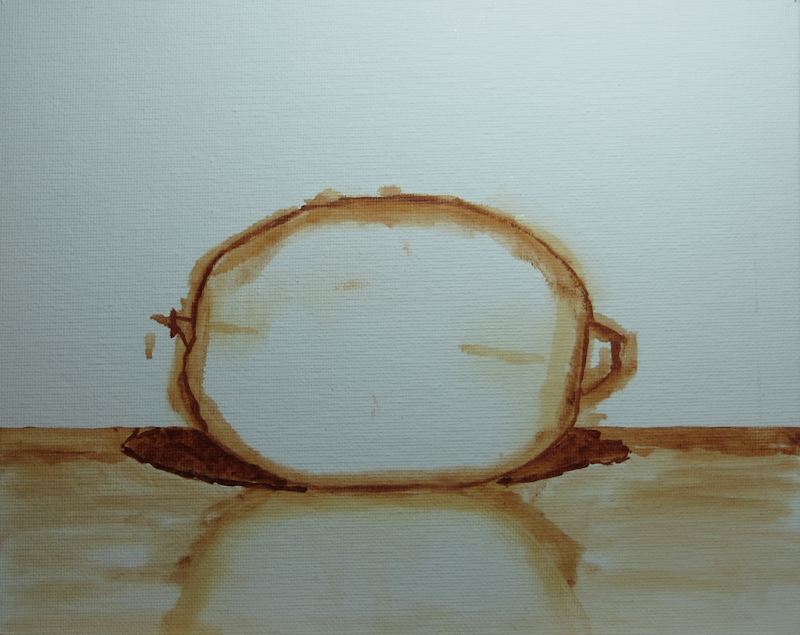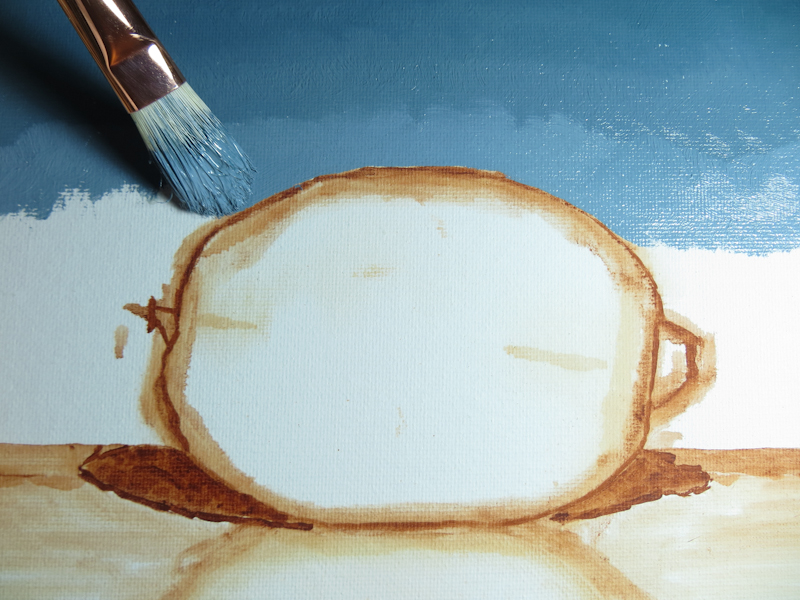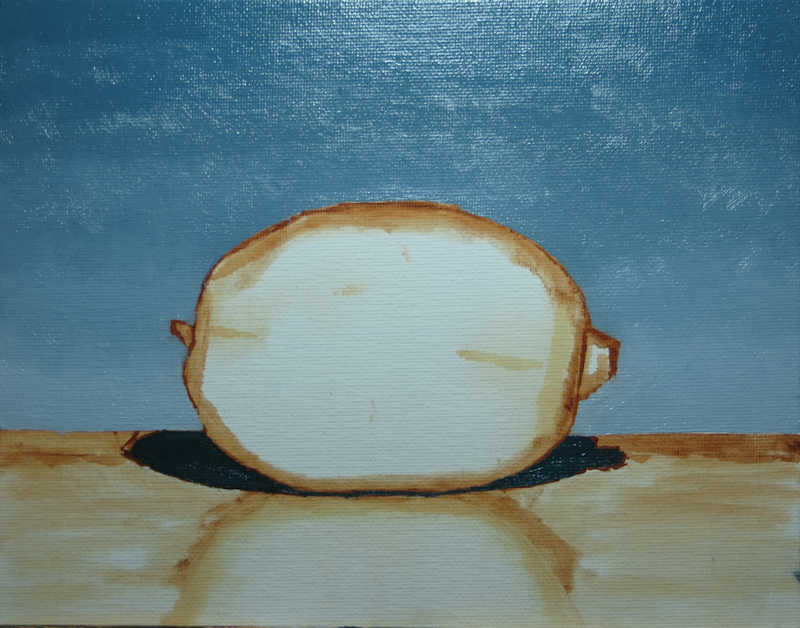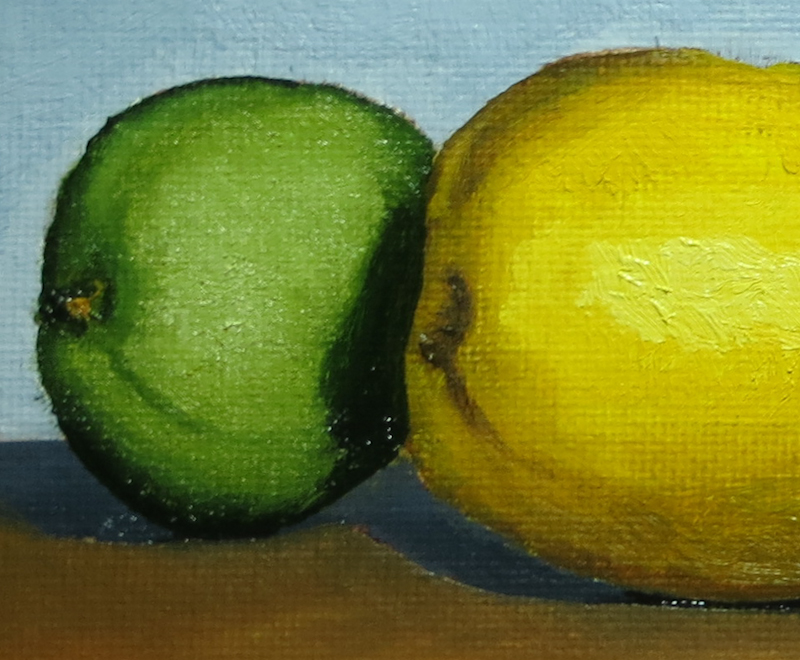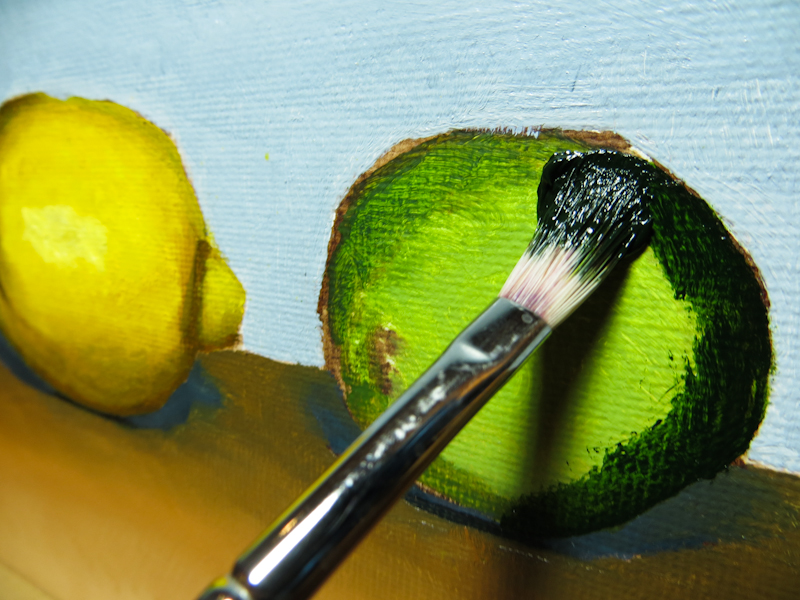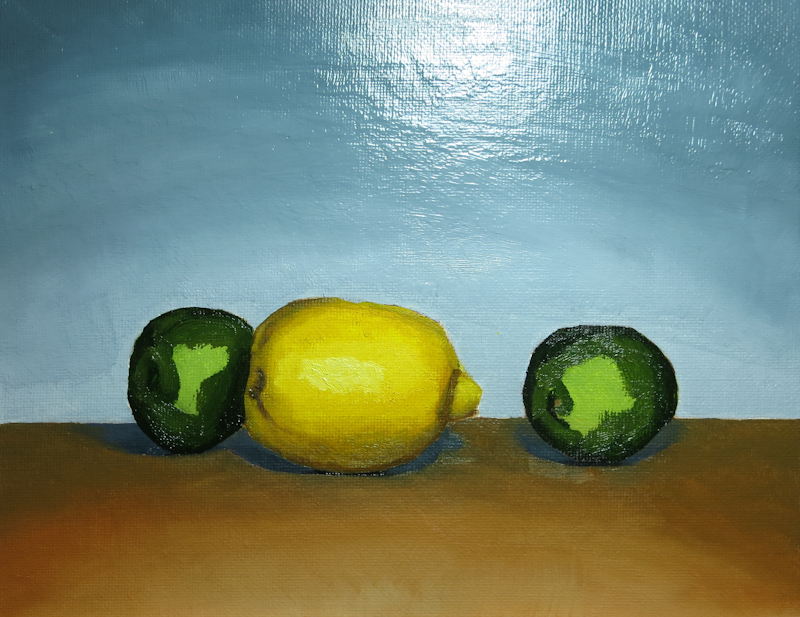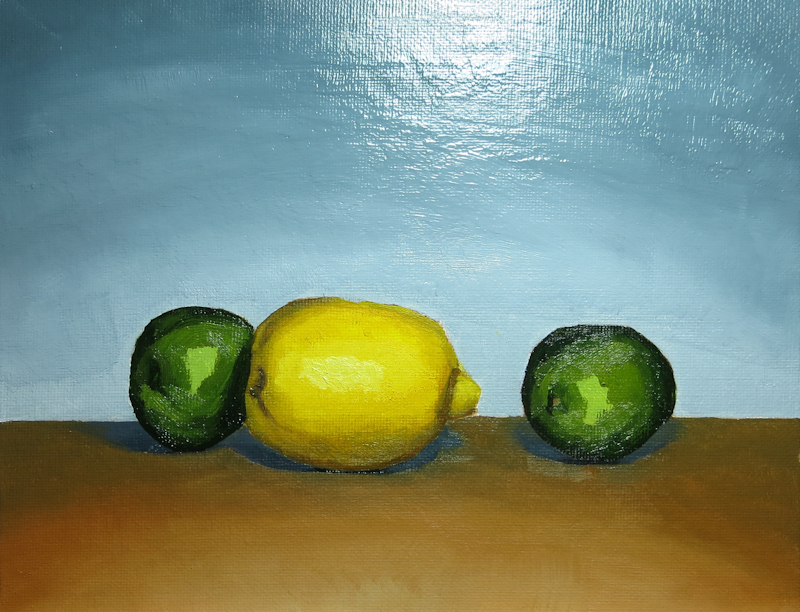On Thursday I began to shade in the form of the lemon. It took me a long time to mix up a string of yellows that didn’t head towards green in the darker values. I was really hoping to move towards an almost neutral, slightly yellow gray, but my darker values always seemed more brown than gray.
I used Cadmium Yellow Medium and Titanium White for the lightest step. The darker steps were made from the same yellow, mixed with Burnt Umber, Burnt Sienna, and Ultramarine Blue. My basic approach was to mix Yellow, Burnt Umber, and Ultramarine until I got the right value, then push it away from green, using either the Burnt Sienna or the Burnt Umber. If I went too far and it started looking like a reddish brown, I would add Ultramarine to pull it back towards a neutral.
This scene uses frontal lighting, so most of the darker values are only visible around the perimeters of the lemon and the limes. I like the modeling on the lemon, but need to work on the shape a bit, particularly on the lower left. The next step is the limes.

